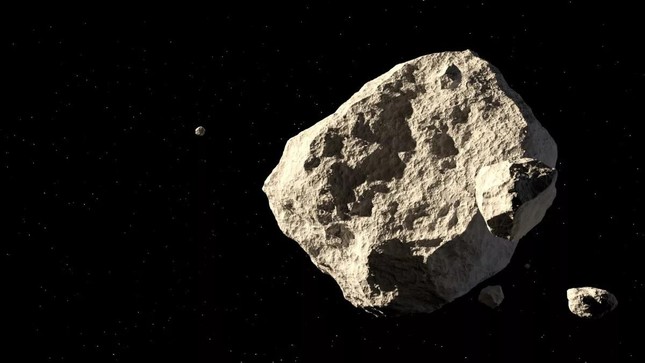
At its closest approach, the asteroid – moving at a speed 27 times that of sound – will come within about 4.3 million km of Earth, more than 8 times the average distance between Earth and the Moon. By cosmic standards, this is a small margin.
NASA flags any space object that comes within 193 million km of Earth as a “near-Earth object,” and any fast-moving object within 7.5 million km is classified as “potentially hazardous.”
Once flagged, astronomers closely monitor these objects, watching for any deviations from their predicted orbits – such as a sudden collision with another asteroid – that could cause them to pose a catastrophic impact threat to Earth.
NASA has tracked the location and orbit of around 28,000 asteroids, mapped with the Asteroid Terrestrial-impact Last Alert System (ATLAS) – a network of four telescopes capable of scanning the entire night sky once every 24 hours.
Since ATLAS came online in 2017, it has discovered over 700 near-Earth asteroids and 66 comets. Two of the asteroids discovered by ATLAS, 2019 MO and 2018 LA, actually impacted Earth, with the first asteroid exploding off the southern coast of Puerto Rico and the second landing near the border of Botswana and South Africa. Fortunately, these asteroids were small and caused no damage.
NASA has estimated the orbits of all near-Earth objects through the end of this century, and the good news is that Earth is not facing any threat of an asteroid collision for at least the next 100 years, according to NASA.
However, this does not mean that space watchers think they should stop their work. There are still many devastating asteroid impacts in recent history to show that vigilance must continue.
For example, in March 2021, a bowling ball-sized meteor exploded over Vermont with the force equivalent to 200 kg of TNT. However, these fireworks are unrelated to the most recent meteor explosion, which occurred near the city of Chelyabinsk in central Russia in 2013.
When the Chelyabinsk meteor entered the atmosphere, it created an explosion equivalent to about 400 to 500 kilotons of TNT, or 26 to 33 times the energy released by the Hiroshima bomb. Fireballs rained down on the city and surrounding areas, damaging buildings, shattering windows, and injuring around 1,200 people.
According to Live Science